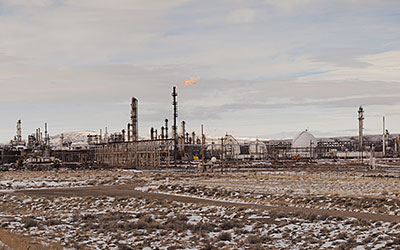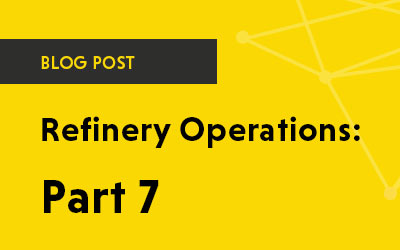Refinery
Delayed Coker Fouling
The delayed coker converts heavy residual oils, such as tars and asphalt, to lighter fuel blending stocks. By decontaminating and degassing delayed coker fouling using chemicals, you can reduce outage time and increase performance.

Chemicals Utilized
Delayed Coker Process
The process involves severe thermal cracking, which breaks large molecules into smaller hydrocarbons. To split the molecules an operating temperature of 1,000+°F is reached. Coke and asphalt can cause delayed coker fouling.
1
The fractionator tower separates gases, gasoline stock, light and heavy oils. The residual material from the process is almost pure carbon with no hydrogen atoms.
2
The active coke drum receives a heated feed and initiates cracking. There are at least two coke drums, and while one is active, the others are inactive.
3
High-pressure water-blasts cut up the coke. Then, the coke drops into railcars for shipment. Although this process produces coke, it is a by-product and not the goal of the delayed coker.
4
The overhead stream from the fractionator will go through large banks of air finfan coolers.
What Problems do the Delayed Coker Unit Cause?
The majority of the delayed coker fouling consists of coke and asphalt that carry-over from the coke drums into the fractionator, associated strippers and cooler pumps. The coke drum overhead transfer lines to the fractionator can foul with coke and asphalt if there is no control of the foaming inside the coke drum.
The fractionator deposits can have high sulfides and cyanide content. If these materials encounter acids, then poisonous gases such as HCN and H2S will form. Additional fouling occurs in the fractionator due to high LEL levels from heavy asphaltenes and heavy gas oils.
Fin-fan coolers will generally have deposits of iron sulfide. These deposits will cause loss of heat transfer and increased pressure drop both of which will reduce unit production.
Finally, the cooling heat exchangers can foul with water-born scales.

Our Chemical Cleaning Solution
The chemical cleaning removes the asphalt, which is the source of the harmful LEL gases. The chemical circulates through the fractionator and associated equipment. Removal of the asphaltene will often allow much of the coke to slough-off the fractionator. This reduces the amount of mechanical cleaning needs as well as the amount of waste produced. Additionally, the circulating solvent is recoverable.
1
Remove Asphalt Foulant
Cleaning of the asphalt in the overhead transfer lines occurs using vapor phase steam injection with FQE® Solvent-H+.
2
Degas the Delayed Coker
Application of a vapor phase cleaning consisting of FQE LEL-Vapor degases the fractionator and stripper units. To control hydrogen sulfide gases, apply FQE H2S Scavenger.
3
Descale and Decontaminate Unit
In order to clean the water-side of cooling exchangers, use FQE Scale-Solve. Then, application of FQE Pyrophoric will solve iron sulfide deposits in the finfan coolers.



